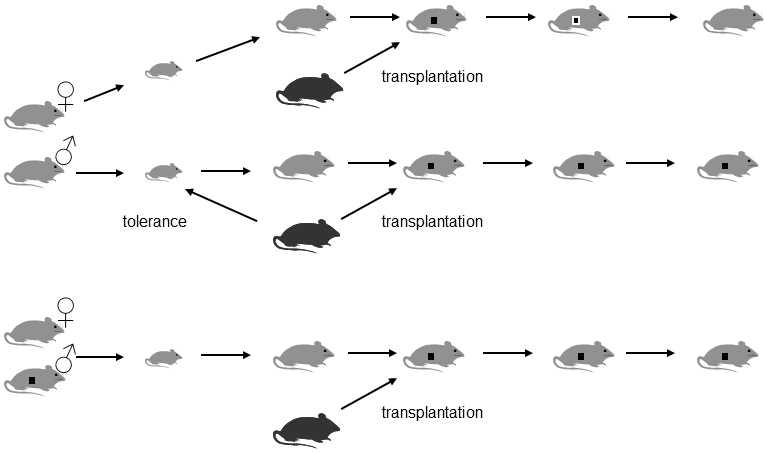III.13.2.1 The Weismann barrier can be disrupted by retroviruses.
The discovery of retroviruses, which are capable of being integrated into the cellular DNA and transferring part of foreign DNA between cells, somewhat disturbed the original concepts of the absolute impermeability of the Weismann barrier.In humans, approximately 1% of all the nuclear DNA is formed of integrated retroviruses (Lower, Lower, & Kurth 1996).Theoretically, it could be imagined that the mutated genes of somatic cells could be transferred through viruses to the germinal cells.It is important for retroviruses that they not multiply only in the somatic cells, but also enter the germinal line and are integrated into the nuclear DNA of future sex cells.Thus, it is not at all surprising that, for example, in mammals, retroviral particles are encountered most frequently in the tissue of the epididymes (Kiessling, Crowell, & Fox 1989).Simultaneously, it is known that part of the retroviral particles contain, in their genome, not only viral genes, but also random pieces of the DNA of the host organism.
Ideas of the possibility of transfer of genes to the germinal line through retroviruses were revived mainly by the results of experiments performed by the immunologist J. Steele(Fig. III.12).His

Fig. III.12. Transfer of acquired immunological tolerance from the father to the progeny. If a skin graft from a mouse of one strain is transferred to a mouse of a different strain, there is a strong immune reaction after a certain time and the graft is rejected. If cells derived from the strain of the future graft donor are introduced into the young mice that are to act as recipients for the graft in adulthood, then specific tolerance is formed. In adulthood, these mice are not capable of recognizing the skin graft as foreign and are not capable of rejecting it. According to the results of some authors, once tolerance has been created in males, it can also be transferred genetically to their progeny. In adulthood, these progeny do not reject grafts from the given strain of mice, even though tolerance was not induced in them when they were young, as it was for their parents. As far as I know, in actual fact the relevant experiments were successfully performed with other types of antigens and did not work with skin grafts; however, the principle of the experiment is the same.
experiments demonstrated that immunological tolerance (and immunoreacticity) against a particular antigen can be hereditary in some cases (Gorczynski & Steele 1980; Gorczynski et al. 1981; Steele 1984).Simultaneously, the tolerance can be transferred not only from the mother to the progeny, which is a quite understandable route, as an antigen and also antibodies and even lymphocytes could pass through the placenta, but also from the father to the progeny.Steel assumed that this could involve transfer through retroviruses incorporated into the DNA of the sperm.
At the present time, most of the few immunologists who still believe in the real existence of paternal heredity of immunity or immunological tolerance tend to assume that immunity and tolerance are transferred in a far more prosaic manner through a nongenetic route.The ejaculate of a male contains not only sperm, but also a substantial number of antibodies.It is known that the transfer of antibodies between organisms can also cause the transfer of immunity and probably alsoimmunological tolerance, most likely as a consequence of the existence of the idiotype network, i.e. the creation of antibodies against the variable part of other antibodies.
